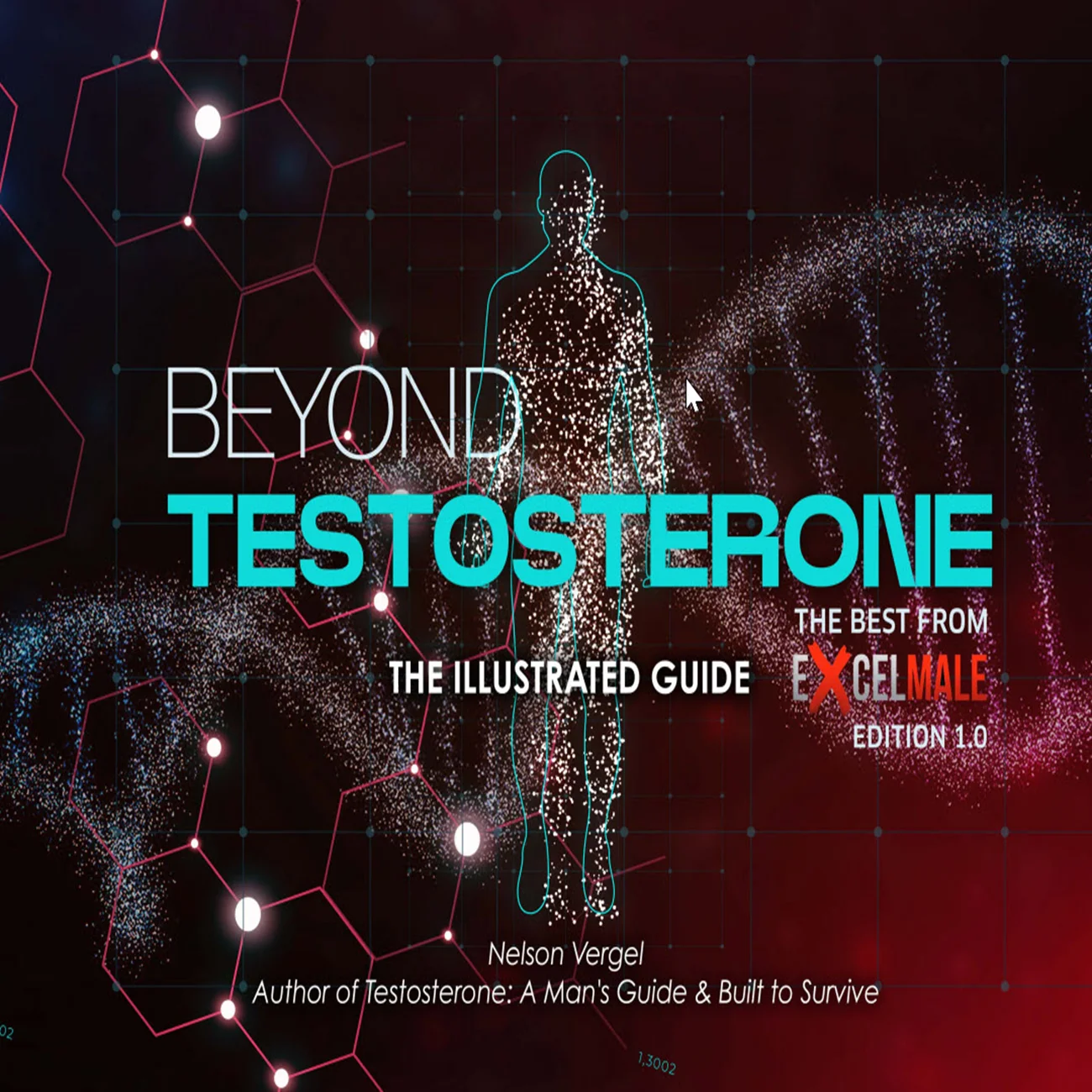madman
Super Moderator
* Miner emphasized that TRAVERSE has reshaped the safety narrative around testosterone replacement therapy (TRT), easing concerns about cardiovascular and prostate risks. Many men with hypogonadism—who often suffer from fatigue, mood changes, and depression—are now more open to discussing TRT as a legitimate treatment rather than a “lifestyle drug.” Still, he noted limitations: TRAVERSE used testosterone gel formulations, leaving unanswered questions about the safety of higher serum levels achieved with injectable testosterone. Future research comparing different formulations, particularly injections associated with higher rates of erythrocytosis, is needed to fully confirm safety across all delivery methods.

 www.urologytimes.com
www.urologytimes.com
At the 2025 LUGPA Annual Meeting, Martin M. Miner, MD, co-director of the Men's Health Center at Brown University in Providence, Rhode Island, gave a talk titled, "Testosterone Controversies: Lessons Learned from TRAVERSE 2025." He presented key findings from the TRAVERSE trial, a landmark FDA-initiated study investigating the cardiovascular safety of testosterone therapy.1 Launched in 2015 in response to earlier reports suggesting possible heart attack and stroke risks, TRAVERSE was a large, randomized, double-blind, placebo-controlled trial involving 5200 men—half receiving testosterone gel and half placebo—from 2018 to 2022. The primary end points included major adverse cardiovascular events (MACE) such as heart attack, stroke, and all-cause mortality. Results demonstrated no increase in MACE among men receiving testosterone compared with placebo. Additionally, testosterone therapy significantly improved sexual function, libido, sexual frequency, and symptoms of depression. However, no benefits were seen in diabetes prevention, bone fracture reduction, or prostate cancer outcomes, and importantly, no increased risk of prostate cancer was observed.
Miner also discussed the T4DM trial, conducted in Australia and published in The Lancet Diabetes & Endocrinology in 2021.2 This study evaluated injectable testosterone undecanoate (Nabido) over 2 years in 1000 men and found a 13% reduction and regression in type 2 diabetes incidence when combined with lifestyle interventions—highlighting a metabolic benefit not observed in TRAVERSE.
Miner emphasized that TRAVERSE has reshaped the safety narrative around testosterone replacement therapy (TRT), easing concerns about cardiovascular and prostate risks. Many men with hypogonadism—who often suffer from fatigue, mood changes, and depression—are now more open to discussing TRT as a legitimate treatment rather than a “lifestyle drug.” Still, he noted limitations: TRAVERSE used testosterone gel formulations, leaving unanswered questions about the safety of higher serum levels achieved with injectable testosterone. Future research comparing different formulations, particularly injections associated with higher rates of erythrocytosis, is needed to fully confirm safety across all delivery methods.
Miner: The TRAVERSE study is the largest randomized, double blind, placebo-controlled trial of testosterone therapy vs placebo that was initiated by the FDA back in 2015. It was done so after the publication of 2 papers that were cross sectional studies [that] showed evidence that testosterone therapy could be associated with the risk of heart attack and stroke. This caused the FDA to put that into the label. The TRAVERSE study was the study that was designed to determine whether that was true or not. The study began enrolling in 2018 until 2022. It was 5200 men, 2600 who received testosterone gel, and 2600 who received placebo. They titrated to achieve certain levels, and they did so in the placebo group as well. They were also looking at primary end points of a composite of heart attack, stroke, and all-cause mortality, or what we call major adverse cardiovascular events or MACE. The results of the study showed that there was no increase in MACE in either the testosterone group or the placebo group, and there was efficacy that was noted in terms of sexual function and libido and sexual frequency and depression improvement but no improvement in diabetes or bone fractures, and also no increase in prostate cancers were found. So it was a negative study and showed no increase in cardiovascular events.
I also spoke about the T4DM study, which is the diabetic study that was published in The Lancet Diabetes & Endocrinology in 2021. This was [conducted in] 6 Australian centers. It was also a randomized double bind placebo-controlled trial of 1000 men for 2 years, and that showed that the testosterone that they were using, which was called Nabido. It's a testosterone undecanoate injection every 3 months. It reduced the risk of type 2 diabetes, and caused regression of type 2 diabetes, together with lifestyle [changes], in almost 13% of men over placebo. So that was a very strong finding as well.
Miner: Well, no man wants to go on anything that's considered a "quality of life drug," and in truth, the men who I see who have testosterone deficiency or hypogonadism are really symptomatic. They have overwhelming fatigue. They are moody and irritable. They often have depression. TRAVERSE showed that depression was also improved. But many men are hesitant to take hormones, particularly because hormones have a very bad reputation, especially after the women's health initiative. The New York Timeseditorial board said we're on the same pathway that was being chartered by women, [which was very] risky.3 So I think it's made it easier to discuss testosterone, that it does not actually have the risk of cardiac adverse events, nor does the risk of prostate cancer [increase].
Miner: The difficulty with TRAVERSE is that it was a testosterone gel because the largest sponsor of traverse was AbbVie, and AbbVie was responsible for both formulations of AndroGel, the 1% gel and the 1.62% gel. And so the concerns are that testosterone gels generally don't get the high levels that we see with injections, and one doesn't know if you can extrapolate gels to parenteral therapies, which are probably the most commonly used therapies in the US at this time, because they're the most inexpensive, and insurers generally choose the most inexpensive. So they're arguing for the use of testosterone cypionate intramuscularly. It would have been nice to be able to have a study of men who achieved higher levels with the injections, and be able to ensure that safety was still present, despite what we call the incidence of erythrocytosis, which means an elevation in hematocrit or the thickness of the blood that occurs with the injections. That occurs maybe 17% of the time vs the gels, which occur about 6% of the time. The question of safety, I think, is valid, but not entirely because of the different formulations that we use. In truth, there were titrations to get men up to decent levels, and we saw significant improvements in efficacy, like I said, in terms of sexual function, depression, and in terms of frequency of sexual events.
Key Takeaways
- TRAVERSE trial showed no increase in MACE with testosterone therapy, improving sexual function and depression symptoms without affecting diabetes or prostate cancer outcomes.
- T4DM trial found a 13% reduction in type 2 diabetes incidence with injectable testosterone and lifestyle interventions, highlighting metabolic benefits.
- TRAVERSE reshaped testosterone therapy safety perceptions, easing concerns about cardiovascular and prostate risks, but questions about injectable formulations remain.
- Future research is needed to confirm the safety of injectable testosterone, particularly regarding erythrocytosis and higher serum levels.

LUGPA25: Martin M. Miner, MD, recaps findings from TRAVERSE, T4DM studies | Urology Times
Miner emphasized that TRAVERSE has reshaped the safety narrative around testosterone replacement therapy, easing concerns about cardiovascular and prostate risks.
At the 2025 LUGPA Annual Meeting, Martin M. Miner, MD, co-director of the Men's Health Center at Brown University in Providence, Rhode Island, gave a talk titled, "Testosterone Controversies: Lessons Learned from TRAVERSE 2025." He presented key findings from the TRAVERSE trial, a landmark FDA-initiated study investigating the cardiovascular safety of testosterone therapy.1 Launched in 2015 in response to earlier reports suggesting possible heart attack and stroke risks, TRAVERSE was a large, randomized, double-blind, placebo-controlled trial involving 5200 men—half receiving testosterone gel and half placebo—from 2018 to 2022. The primary end points included major adverse cardiovascular events (MACE) such as heart attack, stroke, and all-cause mortality. Results demonstrated no increase in MACE among men receiving testosterone compared with placebo. Additionally, testosterone therapy significantly improved sexual function, libido, sexual frequency, and symptoms of depression. However, no benefits were seen in diabetes prevention, bone fracture reduction, or prostate cancer outcomes, and importantly, no increased risk of prostate cancer was observed.
Miner also discussed the T4DM trial, conducted in Australia and published in The Lancet Diabetes & Endocrinology in 2021.2 This study evaluated injectable testosterone undecanoate (Nabido) over 2 years in 1000 men and found a 13% reduction and regression in type 2 diabetes incidence when combined with lifestyle interventions—highlighting a metabolic benefit not observed in TRAVERSE.
Miner emphasized that TRAVERSE has reshaped the safety narrative around testosterone replacement therapy (TRT), easing concerns about cardiovascular and prostate risks. Many men with hypogonadism—who often suffer from fatigue, mood changes, and depression—are now more open to discussing TRT as a legitimate treatment rather than a “lifestyle drug.” Still, he noted limitations: TRAVERSE used testosterone gel formulations, leaving unanswered questions about the safety of higher serum levels achieved with injectable testosterone. Future research comparing different formulations, particularly injections associated with higher rates of erythrocytosis, is needed to fully confirm safety across all delivery methods.
Urology Times:At this year's LUGPA Annual Meeting, you delivered a talk titled "Testosterone Controversies: Lessons Learned from TRAVERSE 2025." Could you summarize the key points from your presentation?
Miner: The TRAVERSE study is the largest randomized, double blind, placebo-controlled trial of testosterone therapy vs placebo that was initiated by the FDA back in 2015. It was done so after the publication of 2 papers that were cross sectional studies [that] showed evidence that testosterone therapy could be associated with the risk of heart attack and stroke. This caused the FDA to put that into the label. The TRAVERSE study was the study that was designed to determine whether that was true or not. The study began enrolling in 2018 until 2022. It was 5200 men, 2600 who received testosterone gel, and 2600 who received placebo. They titrated to achieve certain levels, and they did so in the placebo group as well. They were also looking at primary end points of a composite of heart attack, stroke, and all-cause mortality, or what we call major adverse cardiovascular events or MACE. The results of the study showed that there was no increase in MACE in either the testosterone group or the placebo group, and there was efficacy that was noted in terms of sexual function and libido and sexual frequency and depression improvement but no improvement in diabetes or bone fractures, and also no increase in prostate cancers were found. So it was a negative study and showed no increase in cardiovascular events.
I also spoke about the T4DM study, which is the diabetic study that was published in The Lancet Diabetes & Endocrinology in 2021. This was [conducted in] 6 Australian centers. It was also a randomized double bind placebo-controlled trial of 1000 men for 2 years, and that showed that the testosterone that they were using, which was called Nabido. It's a testosterone undecanoate injection every 3 months. It reduced the risk of type 2 diabetes, and caused regression of type 2 diabetes, together with lifestyle [changes], in almost 13% of men over placebo. So that was a very strong finding as well.
Urology Times: Testosterone therapy has been surrounded by debate and controversy. How has the TRAVERSE trial reshaped conversations about testosterone replacement therapy safety and efficacy?
Miner: Well, no man wants to go on anything that's considered a "quality of life drug," and in truth, the men who I see who have testosterone deficiency or hypogonadism are really symptomatic. They have overwhelming fatigue. They are moody and irritable. They often have depression. TRAVERSE showed that depression was also improved. But many men are hesitant to take hormones, particularly because hormones have a very bad reputation, especially after the women's health initiative. The New York Timeseditorial board said we're on the same pathway that was being chartered by women, [which was very] risky.3 So I think it's made it easier to discuss testosterone, that it does not actually have the risk of cardiac adverse events, nor does the risk of prostate cancer [increase].
Urology Times: Are there any questions that remain unanswered after TRAVERSE, and what additional studies would you like to see?
Miner: The difficulty with TRAVERSE is that it was a testosterone gel because the largest sponsor of traverse was AbbVie, and AbbVie was responsible for both formulations of AndroGel, the 1% gel and the 1.62% gel. And so the concerns are that testosterone gels generally don't get the high levels that we see with injections, and one doesn't know if you can extrapolate gels to parenteral therapies, which are probably the most commonly used therapies in the US at this time, because they're the most inexpensive, and insurers generally choose the most inexpensive. So they're arguing for the use of testosterone cypionate intramuscularly. It would have been nice to be able to have a study of men who achieved higher levels with the injections, and be able to ensure that safety was still present, despite what we call the incidence of erythrocytosis, which means an elevation in hematocrit or the thickness of the blood that occurs with the injections. That occurs maybe 17% of the time vs the gels, which occur about 6% of the time. The question of safety, I think, is valid, but not entirely because of the different formulations that we use. In truth, there were titrations to get men up to decent levels, and we saw significant improvements in efficacy, like I said, in terms of sexual function, depression, and in terms of frequency of sexual events.













